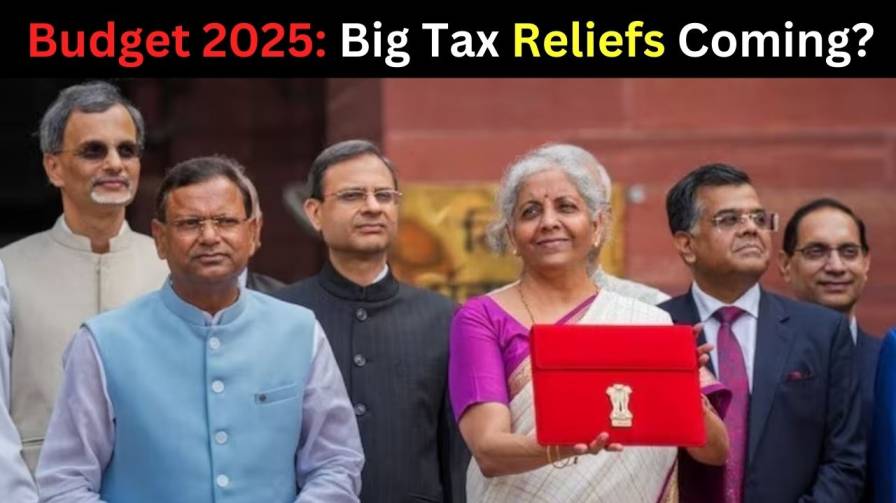The eagerly awaited Union Budget 2025, set to be presented by Finance Minister Nirmala Sitharaman on February 1, has sparked widespread discussion among taxpayers and financial experts. With inflation at record highs and rising living costs squeezing disposable incomes, the spotlight is on whether the government will make the New Tax Regime (NTR) more appealing by adding deductions such as Home Rent Allowance (HRA), enhancements to Section 80C deductions, and an increased standard deduction limit.
This year’s budget presentation will also mark six months since the Modi 3.0 government rolled out its full-fledged fiscal agenda. As the middle class braces itself for relief, let’s take a deep dive into the key issues that taxpayers hope the government will address in Budget 2025.
What Is the New Tax Regime?
Introduced in Budget 2020, the New Tax Regime aimed to simplify the tax structure by offering lower tax rates in exchange for the elimination of many exemptions and deductions available in the old system. This shift was intended to provide flexibility and reduce compliance requirements. However, critics have pointed out that the New Tax Regime feels less appealing to middle-class taxpayers who rely on deductions like HRA, 80C investments, and home loan benefits to reduce their taxable income.
In Budget 2024, the government made significant strides toward bridging this gap by increasing the standard deduction under the New Tax Regime. Experts now hope that Budget 2025 will go further, providing much-needed parity between the two tax regimes.
Standard Deduction: Will It Be Raised Further?
The standard deduction has long been a tool for salaried taxpayers and pensioners to reduce their taxable income without needing to furnish additional documentation. Currently, under the New Tax Regime, salaried individuals can claim a standard deduction of ₹75,000, which was increased from ₹50,000 in the 2024 Budget.
Why is a Higher Standard Deduction Needed?
According to experts, the current deduction does not sufficiently account for the rise in living expenses due to inflation. The rising costs of transportation, medical care, and other essentials have made a case for further enhancement.
- Proposed Increase: Many tax consultants are advocating for a standard deduction of ₹1.2 lakh per annum, aligning it with average annual expenses like medical costs and commuting.
- Historical Context: The standard deduction was first reintroduced in 2018 after being removed in FY 2005-06. Initially set at ₹40,000, it replaced specific exemptions like medical reimbursement and transport allowance.
Expert Opinion
“Given the rising cost of living, it’s only fair to expect the government to raise the standard deduction to ₹1.2 lakh. This would not only provide immediate relief to salaried employees but also create parity between the old and new regimes,” explains Santhosh Sivaraj, Partner at BDO India.
Section 80C: Time for an Upgrade?
Section 80C of the Income Tax Act, 1961, remains one of the most popular tools for tax planning among individuals and Hindu Undivided Families (HUFs). It allows taxpayers to claim a deduction of up to ₹1.5 lakh annually on specific investments and expenses. However, experts argue that this limit has remained unchanged for too long.
Instruments Eligible Under Section 80C
| Investment/Expense | Details | Tax Deduction Limit |
| Public Provident Fund (PPF) | 7.1% annual interest | ₹1.5 lakh |
| Employees’ Provident Fund (EPF) | Contribution by employee | ₹1.5 lakh |
| Life Insurance Premiums (LIC) | Premium paid on life insurance | ₹1.5 lakh |
| Principal Payment on Home Loan | Repayment of loan principal | ₹1.5 lakh |
While the list of eligible investments is extensive, financial planners believe an increase in the overall deduction limit is long overdue.
- Additional Relief via Section 80CCD(1B): Taxpayers can already claim an extra ₹50,000 by contributing to the National Pension Scheme (NPS), but this is not sufficient to offset inflation.
- Proposed Changes: Experts are calling for the deduction limit under Section 80C to be raised to ₹2.5 lakh, reflecting rising financial burdens and encouraging long-term savings.
HRA Exemption: Will It Be Extended to the New Tax Regime?
Under the old tax regime, salaried individuals can claim an HRA exemption to reduce their taxable income based on the rent they pay. The exemption amount is calculated as the lowest of the following:
- Actual HRA received from the employer.
- 50% of basic salary (40% for non-metro residents).
- Rent paid minus 10% of basic salary.
While this provision benefits taxpayers living in rented accommodations, it is currently unavailable under the New Tax Regime. This exclusion has been a major deterrent for salaried individuals considering the switch to the New Tax Regime.
Why Include HRA in the New Tax Regime?
- Increasing Housing Costs: Metro cities and urban centers have seen a sharp rise in rental prices, making HRA exemptions crucial for the middle class.
- Improving Adoption of the New Regime: Including HRA exemptions would make the New Tax Regime more practical for taxpayers facing high housing costs.
Home Loan Deductions: What Could Change?
The interest paid on home loans has historically been a significant tax-saving tool. Under Section 80EE of the Income Tax Act, individuals can claim a deduction of up to ₹50,000 annually on the interest component of their home loan, provided the loan amount is less than ₹35 lakh and the property value is under ₹50 lakh.
Current Challenges
The existing limits under Section 80EE are often considered insufficient, especially in urban areas where real estate prices are much higher.
- Proposed Relief: Taxpayers are hoping for an increase in the deduction limit to at least ₹1 lakh annually under Section 80EE.
- Principal Repayment: The principal repayment is covered under Section 80C but faces competition from other investment options, further limiting its appeal.
What Taxpayers Can Expect from Budget 2025
While the government has not disclosed specific plans for Budget 2025, analysts believe the following changes are likely:
- Higher Standard Deduction: A proposed increase from ₹75,000 to ₹1.2 lakh under the New Tax Regime.
- Enhanced Section 80C Limits: Raising the deduction cap from ₹1.5 lakh to ₹2.5 lakh to reflect modern financial realities.
- HRA Exemption: Including HRA exemptions in the New Tax Regime to make it more taxpayer-friendly.
- Boost for Home Loan Deductions: Increasing the Section 80EE limit to ₹1 lakh annually for interest payments.
Conclusion
As Budget 2025 approaches, taxpayers are anxiously waiting for reforms that will provide meaningful relief from high taxes and inflationary pressures. While the New Tax Regime has simplified compliance, its limited scope for deductions has discouraged widespread adoption. By enhancing standard deductions, increasing Section 80C limits, and including HRA exemptions, the government has an opportunity to make the new regime more attractive and equitable.
Ultimately, these changes would not only ease the financial burden on taxpayers but also strengthen their confidence in the government’s commitment to economic inclusivity. As we gear up for February 1, all eyes are on Finance Minister Nirmala Sitharaman and the policies that could shape the fiscal landscape for millions of Indians in 2025 and beyond.
Disclaimer: The information in this article is based on expert opinions and public discussions. Official details will be confirmed in the Union Budget 2025 announcement.





